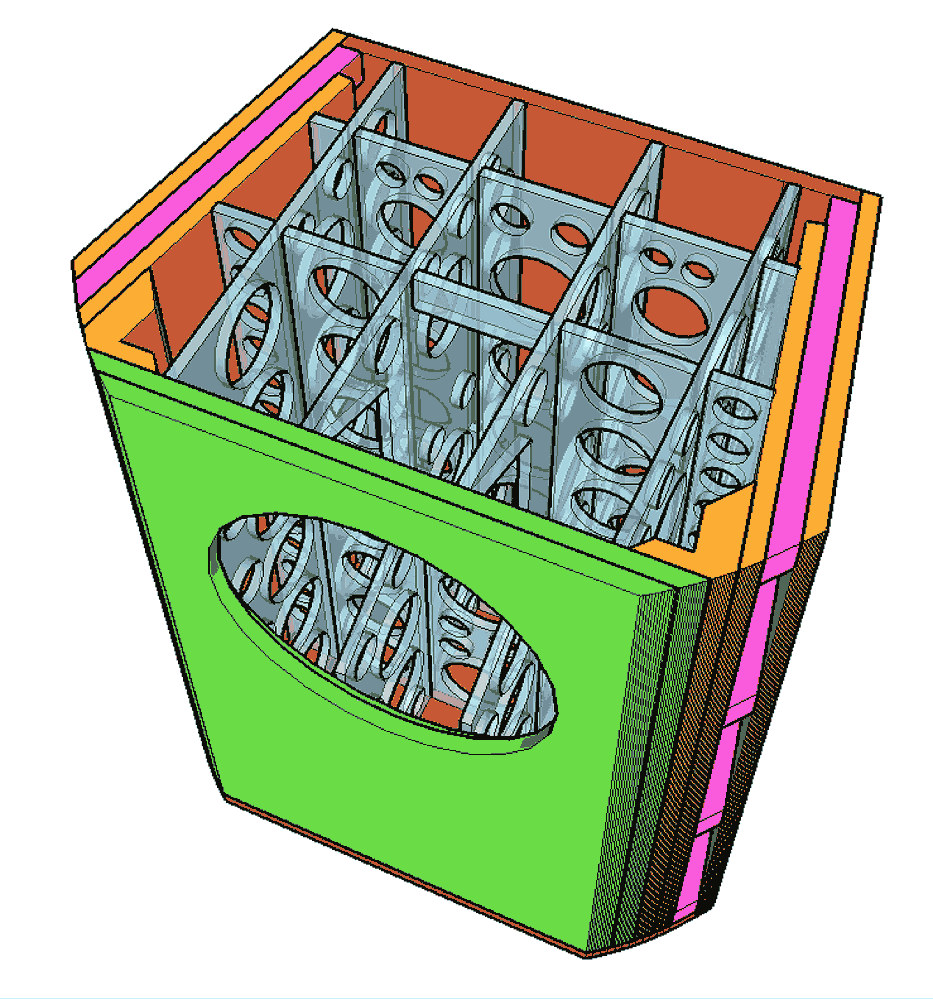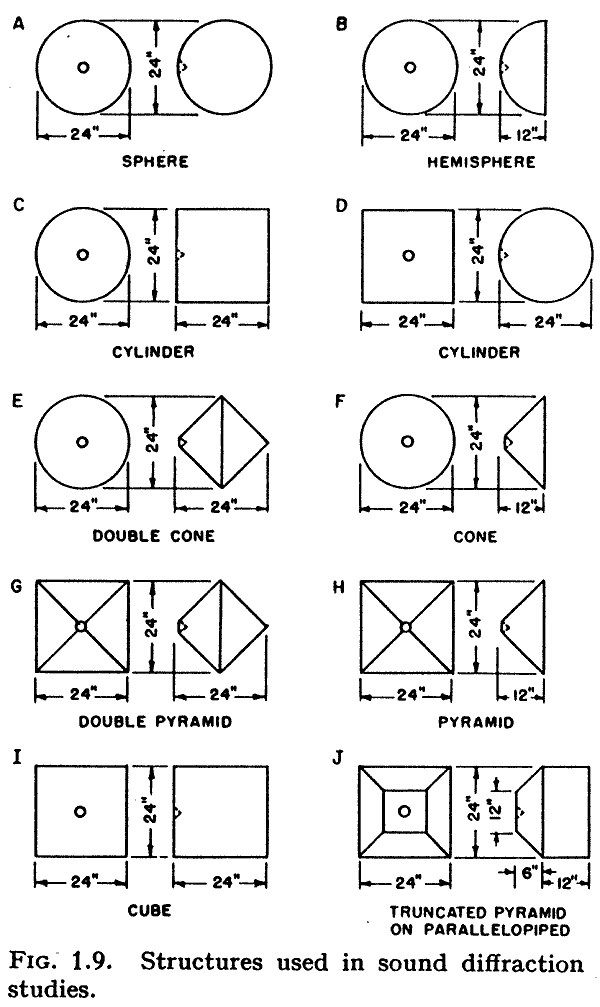How does the size of the driver relate to the width of the baffle in a conventional surface mount configuration with regards to where in frequency the baffle step correction needs to kick in and to which extent?
Is there any relation at all or is it simply a function of wavelength? In other words, will a 6,5" midbass driver get more support from a 600mm wide baffle then its equivalent 15" due to the greater relative baffle area to driver size (or Sd)?
Is there any relation at all or is it simply a function of wavelength? In other words, will a 6,5" midbass driver get more support from a 600mm wide baffle then its equivalent 15" due to the greater relative baffle area to driver size (or Sd)?
It will get more support but baffle diffraction issues creep lower in frequency as well. It is quite easy and fast to experiment in VituixCAD diffraction tool.
Is it possible that the effect of diffraction isnt really that big? When i move the speaker on my theorized baffle only very minor changes occur. And i mean changes not improvements.
Hi, yeah, you can export/feed driver from VituixCAD diffraction sim to the main program. The "diffraction pattern" changes as you move the driver or mic. Feeding the responses to the main program allows you to inspect the whole pattern diffraction creates easier than within the diffraction simulator window which shows the effect on one angle at a time.
Moving the driver on the baffle allows you to move the worst peaks and dips away from listening axis but doesn't defeat the diffraction.
Wider baffle extends the diffraction effects lower in frequency. On the other end of spectrum diffraction gets less with rising frequency due narrower dispersion of driver/waveguide. From this we can think that small driver on a large baffle yields wide bandwidth with diffraction "problems". Big driver on small baffle yields narrowest bandwidth of problems. Roundovers and waveguides help to reduce the diffraction. I'm not sure if any speaker can completely avoid diffraction.
If target of speaker design is to have frequency response variations on listening axis within say 3db range or preferably less, diffraction has to be taken account one way or the other. All above is based on the Vituix simulation experiments and thinking.
Moving the driver on the baffle allows you to move the worst peaks and dips away from listening axis but doesn't defeat the diffraction.
Wider baffle extends the diffraction effects lower in frequency. On the other end of spectrum diffraction gets less with rising frequency due narrower dispersion of driver/waveguide. From this we can think that small driver on a large baffle yields wide bandwidth with diffraction "problems". Big driver on small baffle yields narrowest bandwidth of problems. Roundovers and waveguides help to reduce the diffraction. I'm not sure if any speaker can completely avoid diffraction.
If target of speaker design is to have frequency response variations on listening axis within say 3db range or preferably less, diffraction has to be taken account one way or the other. All above is based on the Vituix simulation experiments and thinking.
Last edited:
The width (primarily) and baffle shape determine what happens as things transition from 2pi to 4 pi radiation.
As a simpliest generalization, BS(-3) is 4560/(baffle width in inches). This coming from the experiements done by Olson (shown below).
But BS is not a simple shelving of FR. There is significant potential ripple depending on the baffle shape. And then room, and room placement also play a role.
Baffle Diffraction Step (article probably needs some tuning).

dave
As a simpliest generalization, BS(-3) is 4560/(baffle width in inches). This coming from the experiements done by Olson (shown below).
But BS is not a simple shelving of FR. There is significant potential ripple depending on the baffle shape. And then room, and room placement also play a role.
Baffle Diffraction Step (article probably needs some tuning).

dave
Although they are both due to diffraction, it helps if baffle step and edge diffraction are viewed separately.
It is the same phenomena, just that how it expresses depends directly on the frequency (size) of the wavelength in question and the size of the discontinuity of the baffle edge.
At HF we get a second audio source at the discontinuity. At low frequencies we get a step in th eresponse (ignoring the room). It is the in-between area where things are not so easily simplified thta the current discusin is about, and not the easier stuff at the extremes.
dave
At HF we get a second audio source at the discontinuity. At low frequencies we get a step in th eresponse (ignoring the room). It is the in-between area where things are not so easily simplified thta the current discusin is about, and not the easier stuff at the extremes.
dave
Thats a nice resource and an interesting graphic. Do you also have fig. 1.9?
I am planing to put a 10" mid driver on a 17" wide slightly curved baffle. I fear that it is "in between" a wide baffle and narrow one which seems to be problematic.
Yes Matt. But baffle step occurs in that nebulous zone where things are not so simple.
You are only talking about baffle step well below the transition, we ar etalking about the transition.
dave
You are only talking about baffle step well below the transition, we ar etalking about the transition.
dave
But correction doesn't effect the ripples. One can only use a filter to compensate for the baffle step and then it would be a case of experimenting because there are too many variables to use a simple formula.
How does the size of the driver relate to the width of the baffle in a conventional surface mount configuration with regards to where in frequency the baffle step correction needs to kick in and to which extent?
Is there any relation at all or is it simply a function of wavelength? In other words, will a 6,5" midbass driver get more support from a 600mm wide baffle then its equivalent 15" due to the greater relative baffle area to driver size (or Sd)?
See attachment, the first is 6,5" ideal driver on 600mm square baffle center. The second is 15" ideal driver on same 600mm square baffle center.
The baffle diffraction is exactly the same except that the 15" is already beaming so the "riple" is not that much as with 6,5" driver which radiates along the baffle for much higher frequencies. The baffle step is at the same bandwidth.
Attachments
I urge anyone interested about the subject to load VituixCAD and experiment with this, it takes seconds to see what the effect is on different size drivers, roundovers, driver position etc. Attached is guide how to do it.
Steps (sorry numbering is not same as in the attachments 😀)
1. In VituixCAD main window connect source with the driver
2. Open diffraction simulator in Tools menu
3. Adjust baffle and driver dimensions, hit New to apply the changes
4. Check "Feed speaker" and hit Export to save simulated measurements (save files where you want), they get automatically loaded into the driver in main window.
5. Go back to the main window and play with the graphs to understand what is happening.
Check out the Directivity window bottom left on the sixpack graphs. Right click on it, see what Normalization does.
Steps (sorry numbering is not same as in the attachments 😀)
1. In VituixCAD main window connect source with the driver
2. Open diffraction simulator in Tools menu
3. Adjust baffle and driver dimensions, hit New to apply the changes
4. Check "Feed speaker" and hit Export to save simulated measurements (save files where you want), they get automatically loaded into the driver in main window.
5. Go back to the main window and play with the graphs to understand what is happening.
Check out the Directivity window bottom left on the sixpack graphs. Right click on it, see what Normalization does.
Attachments
Last edited:
But correction doesn't effect the ripples.
Nope. That is one of the cans of worms dealing with BSC.
The box/baffle shape, driver placement have a direct impact on the ripple.
The difference in a box like this, and one with the same width, but a rectangular front would have the same BS(-3) but the nature of the transition is dramatically different.

dave
How does the size of the driver relate to the width of the baffle in a conventional surface mount configuration with regards to where in frequency the baffle step correction needs to kick in and to which extent?
Is there any relation at all or is it simply a function of wavelength? In other words, will a 6,5" midbass driver get more support from a 600mm wide baffle then its equivalent 15" due to the greater relative baffle area to driver size (or Sd)?
Here is a set of curves showing changes in driver size and changes in baffle width to get an idea of the tradeoffs (gain, ripple). These were done in ABEC (BEM).
The frequency dependence of infinite baffle-ism
Simple answer, it doesn't.How does the size of the driver relate to the width of the baffle in a conventional surface mount configuration with regards to where in frequency the baffle step correction needs to kick in and to which extent?
Thank you everyone, I believe I understand a bit better now.
The support granted by the baffle width is the same no matter what size driver you use, and the impacts of directivity (beaming) as a function of driver size needs to be considered as this is added to the end result.
Intresting, makes me wonder why nearly all speakers of the most popular kind (6,5" two way) all have so small baffles, hardly more than the width of the driver itself, seeing as they could benefit from a bit more support, looking at it from a pure engineering point of view that is, or am I missing something here?
The support granted by the baffle width is the same no matter what size driver you use, and the impacts of directivity (beaming) as a function of driver size needs to be considered as this is added to the end result.
Intresting, makes me wonder why nearly all speakers of the most popular kind (6,5" two way) all have so small baffles, hardly more than the width of the driver itself, seeing as they could benefit from a bit more support, looking at it from a pure engineering point of view that is, or am I missing something here?
The reason for me asking this is that I am in the process of designing a speaker for the B&C 15NDL88 in a sealed enclosure paired with Faital Pro HF146 on a eighteen sound XT1464 horn, and given that I will go for a internal volume of ~80dm3 (Qtc ~0.55) I wanted to see if increasing the baffle width could partly reduce the drop in response starting around 400Hz with a -3dB point around 100Hz.
I aim to use my old but still kicking driverack 260 for processing (xo, delay and eq) but I am also seriously considering a external (or internal depending on complexity) passive xo given that the drivers used are rather well behaved in the 1kHz region where I propose to cross them over.
I aim to use my old but still kicking driverack 260 for processing (xo, delay and eq) but I am also seriously considering a external (or internal depending on complexity) passive xo given that the drivers used are rather well behaved in the 1kHz region where I propose to cross them over.
- Home
- Loudspeakers
- Multi-Way
- front baffle width & driver size relation




